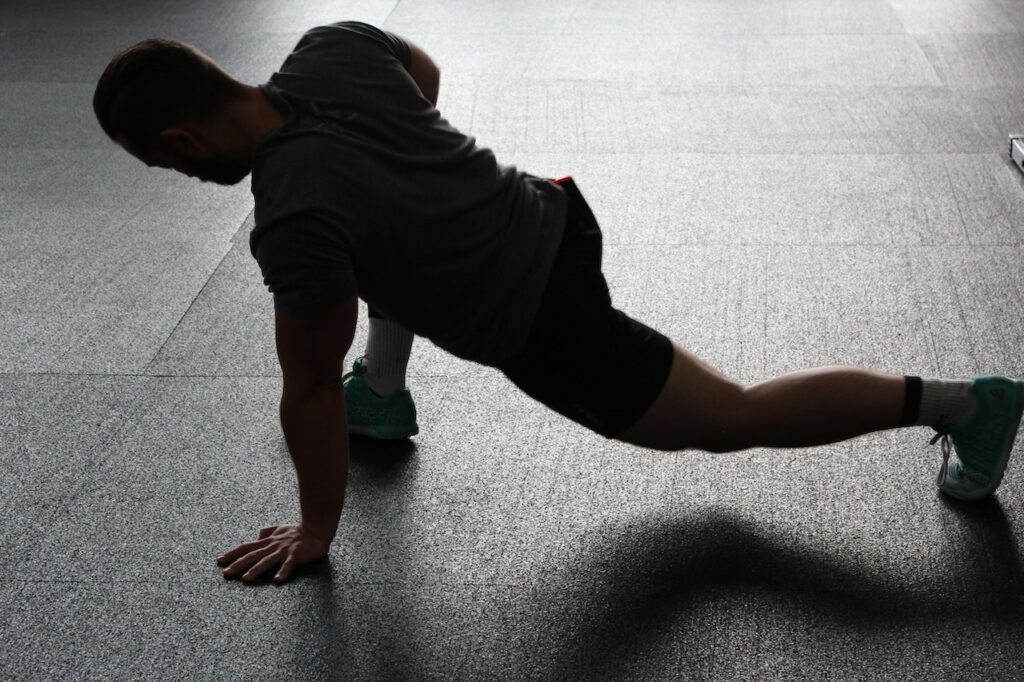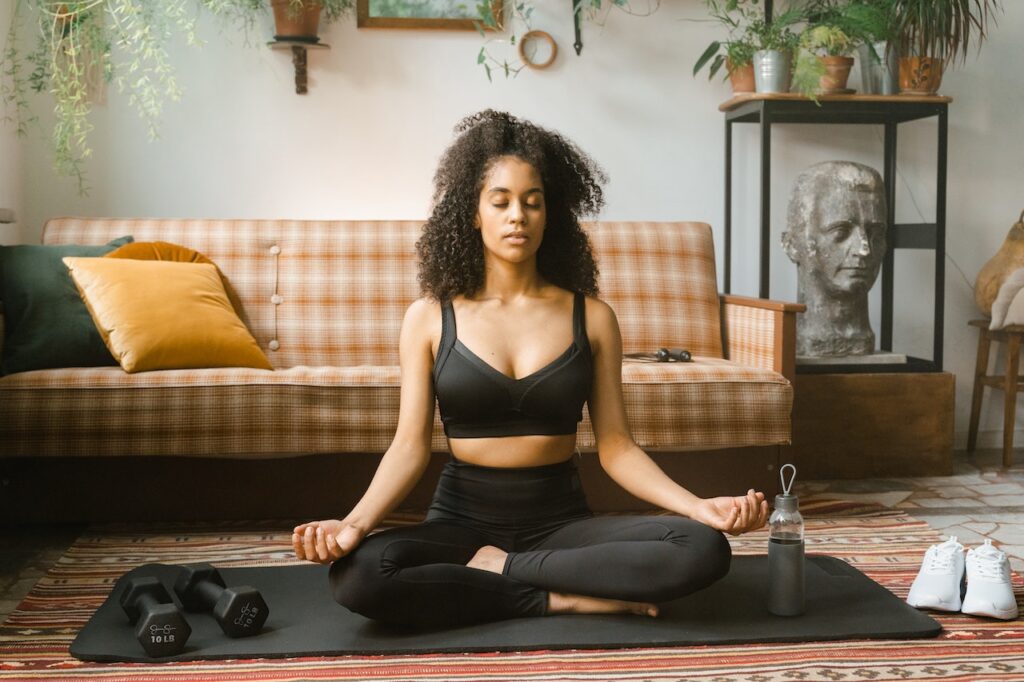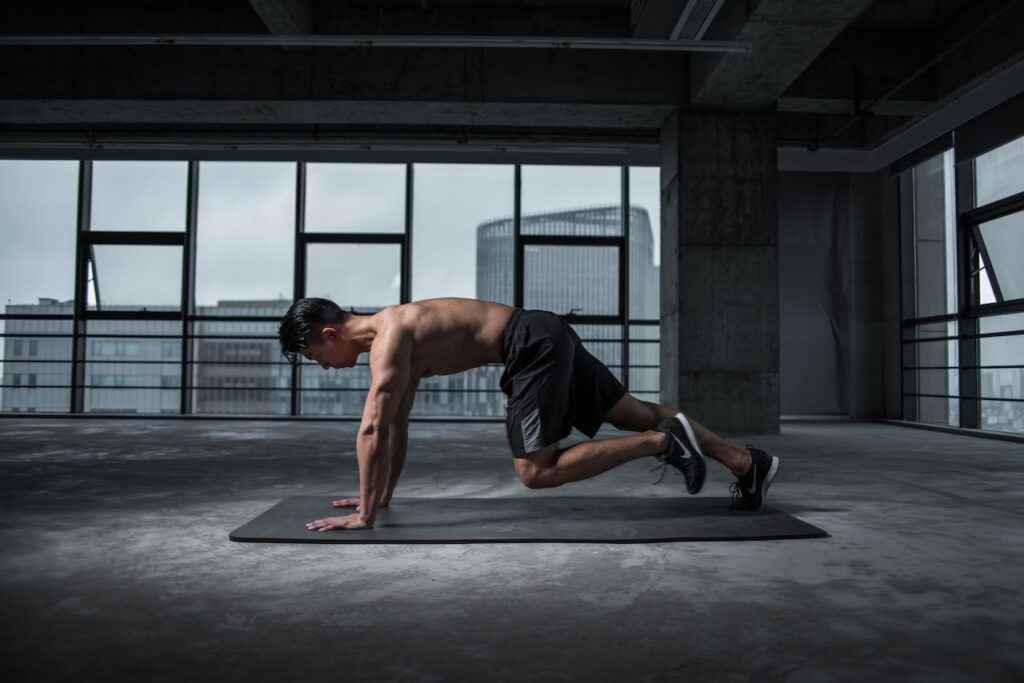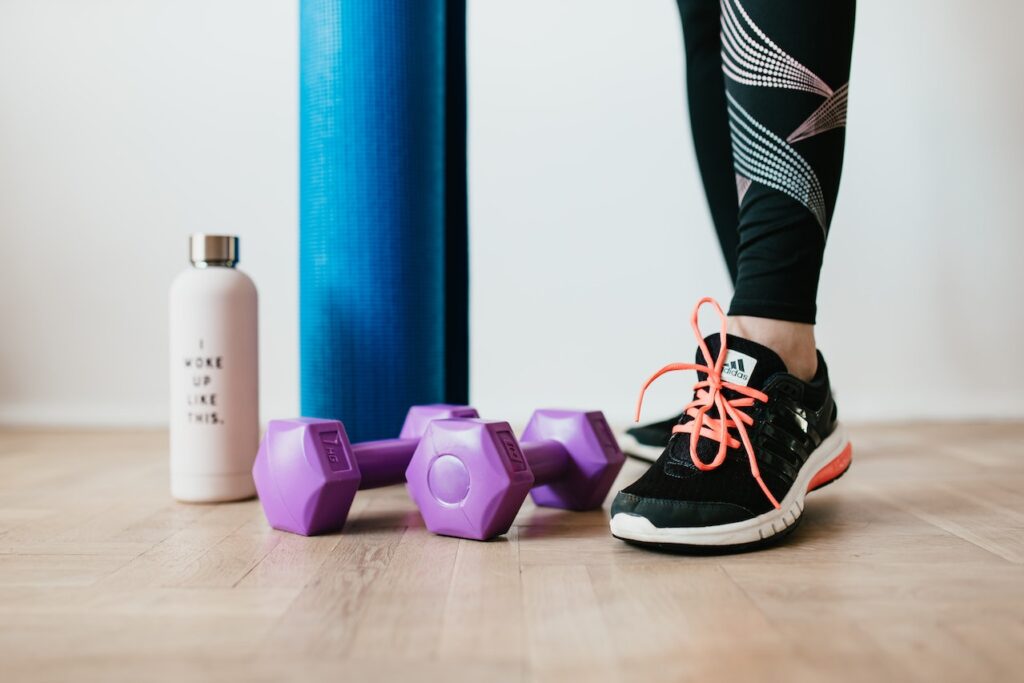Understanding the Importance of Yoga in a Home Gym
Incorporating yoga into your home workout routines provides several benefits for your health and fitness. Beyond improving flexibility, yoga can boost muscle strength, promote cardiovascular health, aid in weight management, and even serve as a source of motivation to maintain a regular exercise schedule.
A yoga mat is more than just an accessory—it’s an essential part of your yoga practice. The mat serves as your personal space, a barrier between you and the hard floor, and a tool to enhance your stability and balance. It provides a cushion to your body while executing various poses and reduces the risk of slipping when things get sweaty.
Read our article to choose the right home gym equipment for your needs.

Different Types of Yoga Mats
There’s a wide variety of yoga mats available on the market, each with its unique set of pros and cons.
- PVC (Polyvinyl Chloride) Mats: Known for their durability and stickiness, PVC mats are often recommended for beginners. However, they’re not biodegradable, which might concern eco-conscious yogis.
- Rubber Mats: They’re a natural, eco-friendly alternative to PVC mats. They provide excellent grip and are comfortable but can be a little heavy to carry around.
- Cork Mats: Another eco-friendly option, cork mats, are naturally antimicrobial, providing a clean surface for your yoga practices. They offer a good grip, but their durability can be less than PVC or rubber mats.

Factors to Consider When Buying a Yoga Mat
When selecting a yoga mat, several factors need to be taken into account:
- Thickness: A standard yoga mat is about 1/8 inch thick, but the range can vary. If you need extra cushioning for your joints, you might opt for a thicker mat.
- Texture: This influences how much traction a mat provides. Depending on the material, the texture can be either man-made (like a pattern of bumps) or inherent to the material (like jute or rubber).
- Material: This can affect the mat’s sponginess, texture, and eco-friendliness, as discussed in the previous section.
- Size: Most mats are 68 inches long, but if you’re taller, you might want to consider a longer mat.
- Durability: You want a mat that withstands regular use. More durable mats may be more expensive, but they could save you money in the long run by not needing to replace them as often.
With this knowledge at your disposal, you’re well on your way to finding the best yoga mat for your home gym.

Review and Recommendations: Top Yoga Mats for Your Home Gym
Finding the perfect yoga mat can be a bit of a challenge with the overwhelming options available. Here are a few top-rated selections that tick most, if not all, of the boxes discussed:
- Manduka PRO Yoga Mat: This mat is lauded for its density, thickness, and lifetime durability. It’s a PVC mat, so while it might not score high on the eco-friendliness scale, its long-lasting nature means less waste in the long run.
- Jade Harmony Yoga Mat: Made from natural rubber, this mat offers a perfect balance between comfort, traction, and eco-friendliness. It’s a little heavier than others, but the performance might make the extra weight worth it.
- Gaiam Essentials Thick Yoga Mat: If you’re on a budget but still want a good quality mat, the Gaiam Essentials mat could be your pick. It offers extra thickness for joint protection and comes with a carrying strap for convenience.
Caring for Your Yoga Mat
Proper care and maintenance can significantly extend the lifespan of your yoga mat. Regular cleaning keeps your mat hygienic and helps maintain its grip. Most mats can be cleaned with a simple solution of water and mild soap. However, always check the cleaning instructions for your specific mat to avoid unintentional damage. Store your mat rolled up in a cool, dry place, and avoid prolonged exposure to direct sunlight.
Free weights or resistance bands? Find out which is best for you.
Other Home Gym Essentials for Yoga
While a yoga mat is fundamental, other fitness accessories can enhance your yoga practice at home. Yoga blocks assist in maintaining balance, straps aid in achieving certain poses, and a good quality yoga towel can provide extra grip during sweaty sessions. You might also want to consider a bolster for added support during restorative poses.

